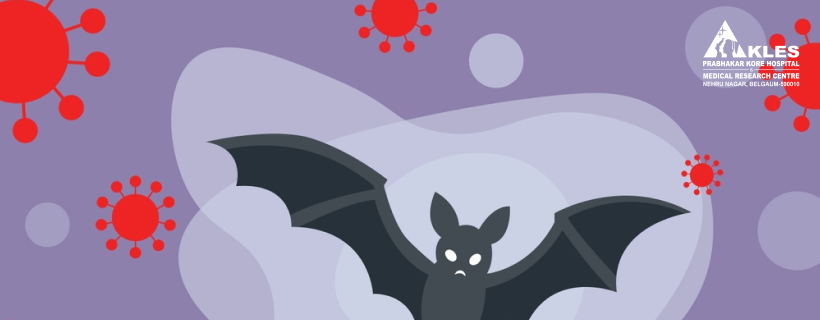

Medically Reviewed by Dr. Ankitha Teja Narayan, Internal Medicine
Written by KIE Editorial Contributors
3.5 min read | Last Updated: 12 August 2025 | Published On: 12 August 2023
Nipah virus (NiV) is a highly contagious zoonotic virus that poses a serious public health threat due to its high fatality rate and potential for outbreaks. First identified in Malaysia in 1998, Nipah virus infections can range from mild symptoms to severe respiratory illness and fatal encephalitis.
Nipah virus is caused by Henipavirus, a genus under the family Paramyxoviridae. The natural hosts of the virus are fruit bats, also known as flying foxes, which are believed to transmit the virus to humans through direct contact or via intermediate hosts such as pigs.
Early Nipah virus symptoms are often nonspecific, which makes early detection difficult. These symptoms usually appear 4–14 days after exposure.
Common symptoms include:
In more advanced stages, the virus may cause acute encephalitis, seizures, and coma. Understanding the Nipah virus symptoms and treatment is crucial for timely medical intervention.
The primary modes of Nipah virus transmission include:
Healthcare workers and caregivers are at high risk due to exposure to patients' body fluids during an outbreak.
Nipah virus is caused by exposure to infected animals, especially fruit bats. Key risk factors for Nipah virus infection include:
Populations in rural and forested regions, especially in South and Southeast Asia, are at increased risk.
The Nipah virus life cycle begins when the virus enters a host, usually a bat. It replicates within the bat’s cells and can be excreted in saliva, urine, or feces. When another host, like a pig or human, comes in contact with contaminated materials, the virus infects the new host and continues its replication. Human-to-human transmission is often observed during the symptomatic phase through respiratory droplets or bodily fluids.
There is currently no specific antiviral treatment for Nipah virus. Supportive care is the mainstay of Nipah virus treatment, which includes:
Researchers are working on monoclonal antibody therapies and vaccines, but as of now, Nipah virus treatment remains symptomatic and preventive.
The Nipah virus death rate is significantly high, ranging between 40% and 75%, depending on the outbreak and access to healthcare. This high fatality rate makes it one of the most dangerous emerging infectious diseases.
Since there is no licensed vaccine, Nipah virus prevention is the most effective way to reduce the risk of infection. Preventive strategies include:
Public education and surveillance are key to preventing Nipah virus transmission and managing potential outbreaks.
The Nipah virus is a serious health concern due to its severe symptoms, high mortality, and potential for epidemic spread. Understanding the Nipah virus symptoms, transmission routes, and available treatment options is vital. As no specific cure exists, prevention through awareness, hygiene, and early detection remains the best defense.
If you or a loved one experience symptoms after suspected exposure, consult a healthcare provider immediately.
Get in Touch with a Doctor
Pregnant women are considered more vulnerable to severe infections due to a generally weakened immune response during pregnancy, making early detection and care vital.
While recurrence is rare, some survivors have reported long-term neurological effects and, in some cases, late-onset encephalitis months after recovery.
Yes, diagnostic methods include RT-PCR for viral RNA detection and ELISA for IgM and IgG antibodies. Early diagnosis is crucial for supportive treatment and isolation.
Yes, especially fruits contaminated with bat saliva, urine, or feces. Eating raw or partially eaten fruits from open fields should be avoided in high-risk areas.